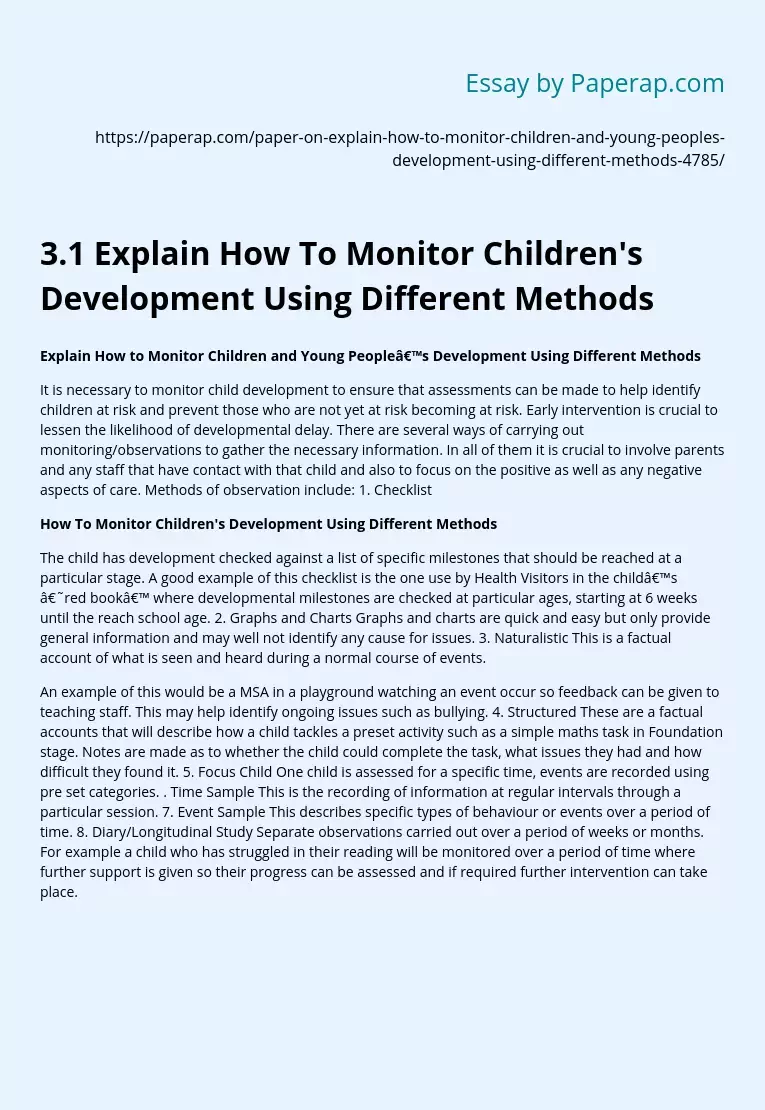3.1 Explain How To Monitor Children's Development Using Different Methods
Explain How to Monitor Children and Young People’s Development Using Different Methods
It is necessary to monitor child development to ensure that assessments can be made to help identify children at risk and prevent those who are not yet at risk becoming at risk. Early intervention is crucial to lessen the likelihood of developmental delay. There are several ways of carrying out monitoring/observations to gather the necessary information. In all of them it is crucial to involve parents and any staff that have contact with that child and also to focus on the positive as well as any negative aspects of care.
Methods of observation include: 1. Checklist
How To Monitor Children’s Development Using Different Methods
The child has development checked against a list of specific milestones that should be reached at a particular stage. A good example of this checklist is the one use by Health Visitors in the child’s ‘red book’ where developmental milestones are checked at particular ages, starting at 6 weeks until the reach school age.
2. Graphs and Charts Graphs and charts are quick and easy but only provide general information and may well not identify any cause for issues. 3. Naturalistic This is a factual account of what is seen and heard during a normal course of events.
An example of this would be a MSA in a playground watching an event occur so feedback can be given to teaching staff. This may help identify ongoing issues such as bullying. 4. Structured These are a factual accounts that will describe how a child tackles a preset activity such as a simple maths task in Foundation stage.
Notes are made as to whether the child could complete the task, what issues they had and how difficult they found it. 5. Focus Child One child is assessed for a specific time, events are recorded using pre set categories. . Time Sample This is the recording of information at regular intervals through a particular session. 7. Event Sample This describes specific types of behaviour or events over a period of time. 8. Diary/Longitudinal Study Separate observations carried out over a period of weeks or months. For example a child who has struggled in their reading will be monitored over a period of time where further support is given so their progress can be assessed and if required further intervention can take place.
3.1 Explain How To Monitor Children's Development Using Different Methods. (2019, Nov 27). Retrieved from https://paperap.com/paper-on-explain-how-to-monitor-children-and-young-peoples-development-using-different-methods-4785/

